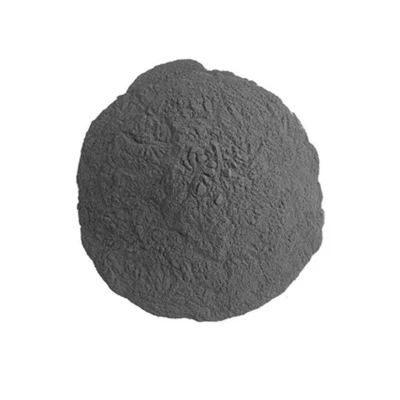Zirconium Carbide ZrC Powder
Formula | ZrC |
Synonyms | Zirconium Carbide |
Appearance | Black Powder |
Particle Size | 1-100 um, can be customized upon request |
Melting Point | 3540°C |
Density | 6.78 g/cm 3 |
CAS Number | 12070-14-3 |
Purity | 99.5% – 99.99% |
Description of Zirconium Carbide Powder
Zirconium carbide (ZrC) powder is a highly refractory material known for its hardness, high melting point, and good electrical conductivity. It is used in various high-temperature and wear-resistant applications.
Zirconium carbide powder is typically synthesized by carbothermic reduction, where zirconium dioxide (ZrO₂) is reacted with carbon (usually in the form of graphite) at high temperatures in an inert or reducing atmosphere.
Princeton Powder is a leading supplier of Zirconium carbide powder.
Chemical Composition
Product | Particle Size (μm) | Chemical Composition (%) | ||||||||
Total C | Free C | Impurity (%max) | ||||||||
Fe | Si | Al | O | N | Na | Ca | ||||
ZrC-1 | 1.0-1.5 | 11.0-11.4 | ≤0.80 | 0.05 | 0.05 | 0.05 | 0.80 | 1.00 | 0.01 | 0.01 |
ZrC-2 | 3.0-5.0 | 11.2-11.8 | ≤0.80 | 0.05 | 0.05 | 0.05 | 0.50 | 1.00 | 0.02 | 0.02 |
Particle Size distribution
1-100 μm. (Various particle sizes can be customized)
Applications
- High-Temperature Structural Components: Used in applications requiring materials that can withstand extreme temperatures, such as in rocket nozzles, nuclear reactors, and furnaces.
- Abrasives: Due to its hardness, ZrC is used as an abrasive material in grinding and cutting tools.
- Protective Coatings: ZrC is used in coatings for parts that require resistance to wear and corrosion, especially in high-temperature environments.
- Nuclear Applications: Due to its low neutron absorption cross-section, ZrC is used as a coating material for fuel particles in nuclear reactors.
- Cutting Tools: ZrC is used in cutting tools for its hardness and thermal stability, providing a longer tool life and better performance at high cutting speeds.
- Ceramic-Matrix Composites: ZrC is used as a reinforcement phase in ceramic-matrix composites, which are used in aerospace and defense applications.
Zirconium Carbide Powder Reference
- A hydrothermal method was employed to synthesize the precursor of nano-zirconium carbide, which was subsequently heat treated at high temperatures under vacuum to obtain finely dispersed nanometer-sized zirconium carbide powder through a carbothermic reduction reaction. Scanning Electron Microscopy (SEM) was utilized to examine the microstructure of the precursors obtained under different hydrothermal conditions and carbon contents. The effects of different heat treatment temperatures on the microstructure of the products were analyzed.

